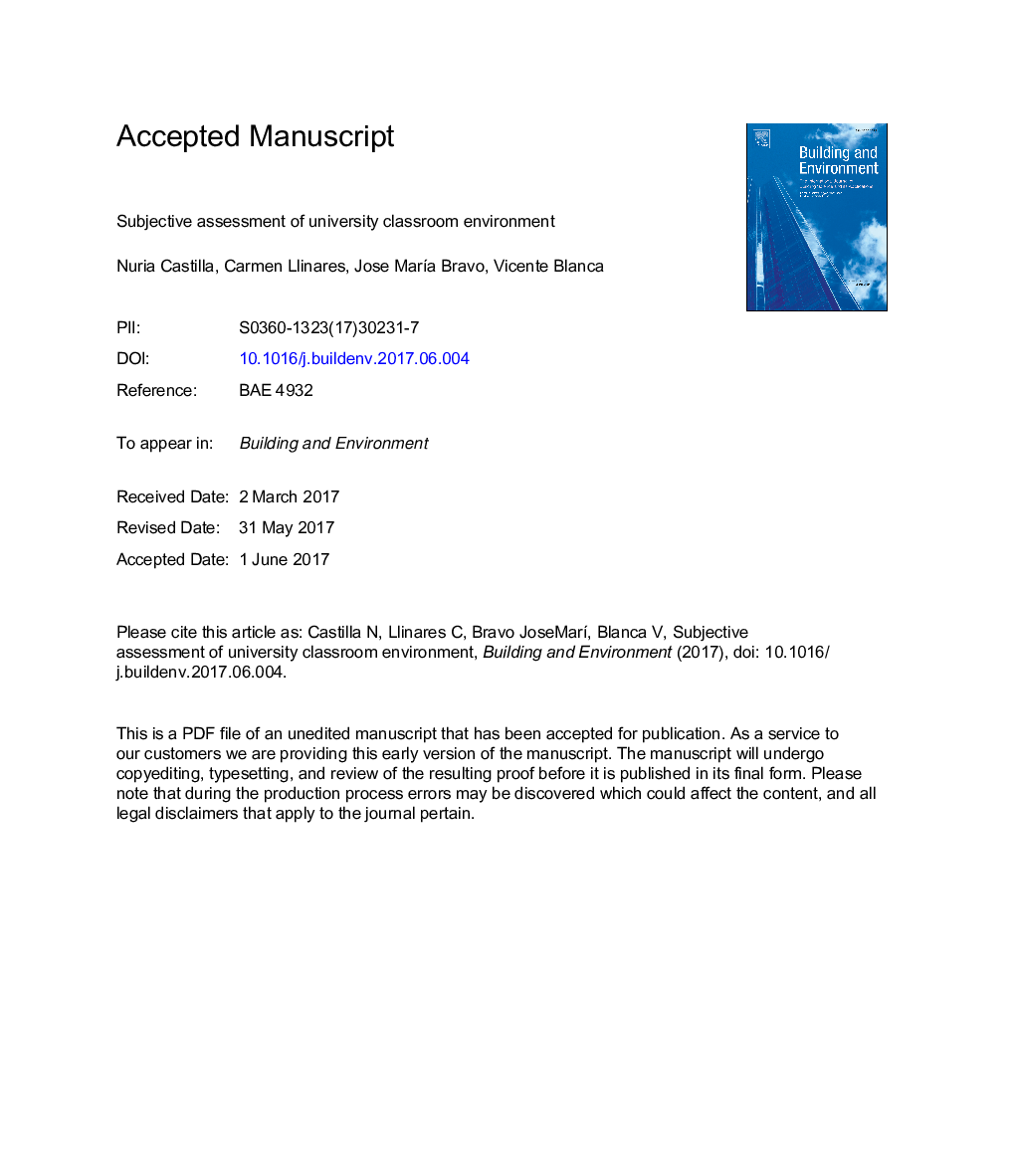| Article ID | Journal | Published Year | Pages | File Type |
|---|---|---|---|---|
| 4911448 | Building and Environment | 2017 | 47 Pages |
Abstract
Research into the design of learning environments is warranted as the classroom space impacts on students' wellbeing and learning performance. Studies on subjective evaluation of classrooms usually focus on the influence of more objective aspects like temperature, light, sound, etc., based on concepts or attributes defined by experts. Thus, the attributes used to find relations with design parameters might not be recognised by users, thereby conditioning the evaluation process itself. This paper aims to analyse students' affective response to a university classroom in their own words, and then, after obtaining the semantic space, to identify the design elements that generate a positive affective response. This analysis was carried out implementing the Semantic Differential method in the framework of Kansei Engineering. A sample of 918 university students was assessed in situ in 30 university classrooms. The results show that students' affective structure in relation to their classroom comprises six independent factors: functionality and layout, cosy and pleasant, concentration and comfort, modern design, daylight and outward facing, and artificial lighting. From these factors, efforts to improve the classroom environment should be directed mainly towards two aspects: improving classroom functionality-layout, which is significantly related to the work space allocated to students; and the sensation of cosy-pleasant which is generated by all the classroom design parameters, but in particular, those that refer to the relationship of the classroom with the outdoor environment.
Keywords
Related Topics
Physical Sciences and Engineering
Energy
Renewable Energy, Sustainability and the Environment
Authors
Nuria Castilla, Carmen Llinares, Jose MarÃa Bravo, Vicente Blanca,
